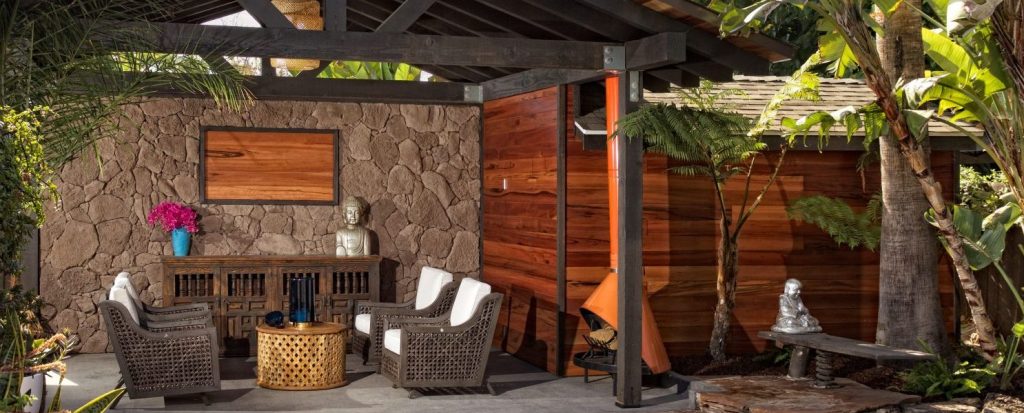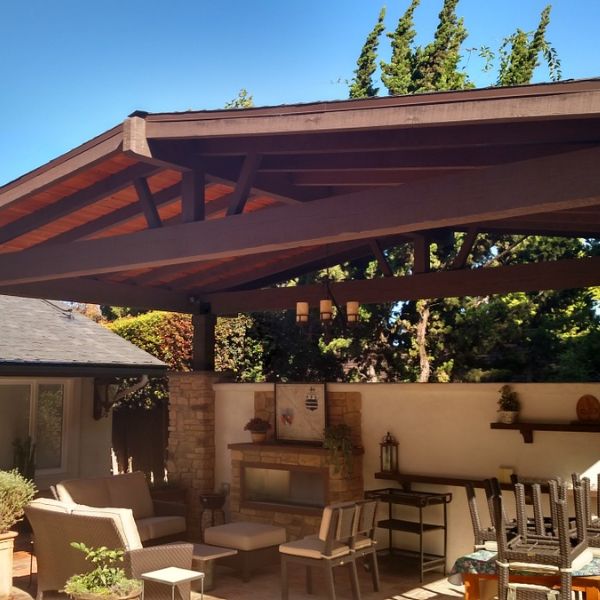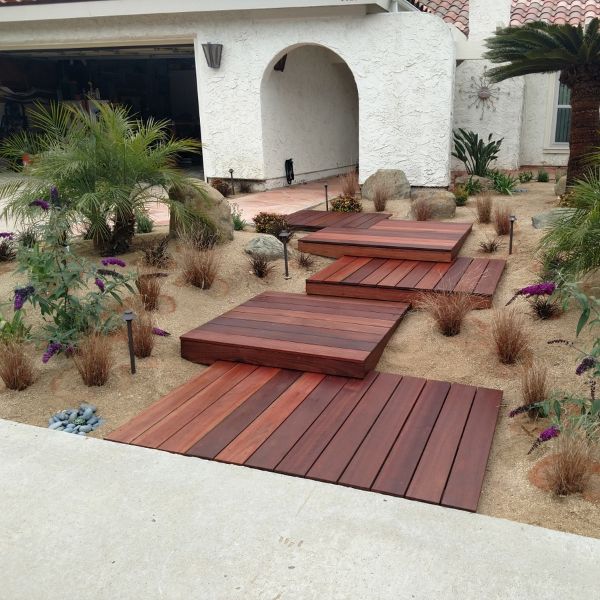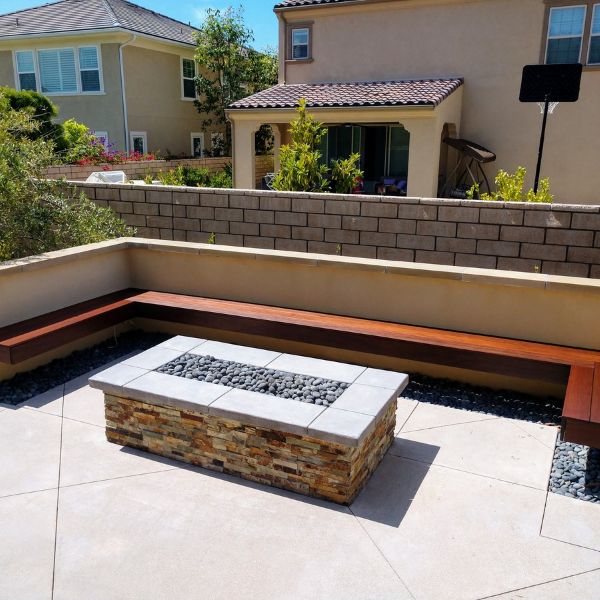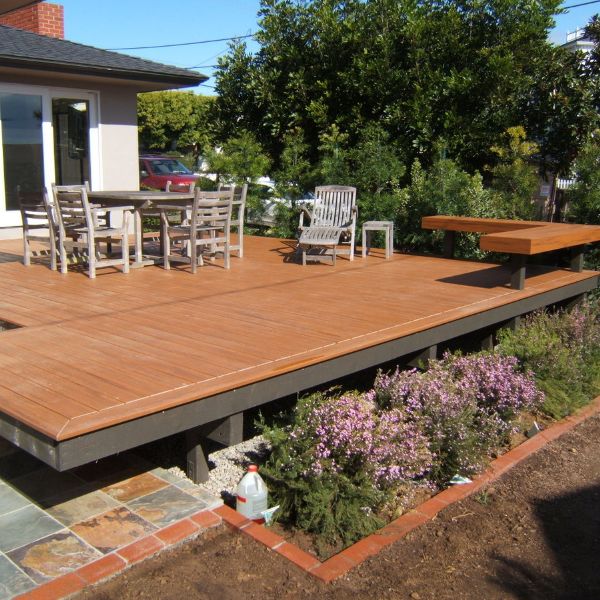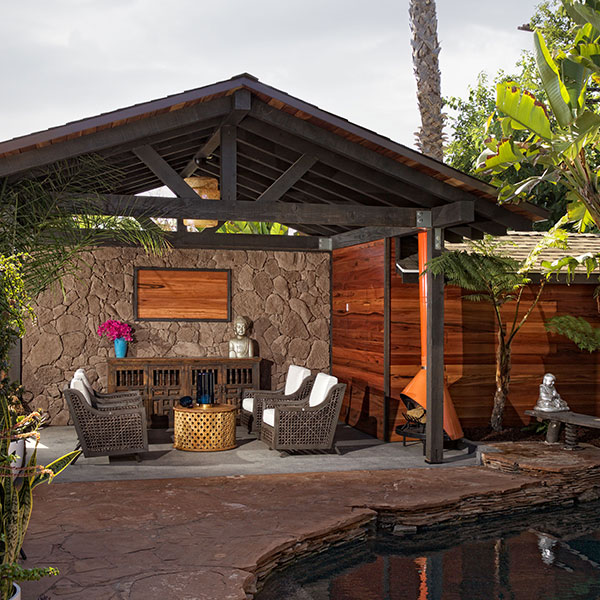Crafting Your Custom Walkway With Wilson Woodscape
Are you dreaming of the perfect walkway in your backyard? With an array of options at your fingertips, choosing the perfect walkway material can turn into a daunting task.
At Wilson Woodscape, our San Diego landscape contractor, Jeff Wilson, will assist in the process, making it smoother and more enjoyable as you journey toward transforming your property.
Determining Your Perfect Walkway Material
When it comes to choosing the perfect walkway material for your home, several factors need to be taken into consideration. The right material can enhance the aesthetics of your property, provide functionality, and complement the overall design.
It’s essential to evaluate these variables before making a decision:
- Budget — Consider your budget constraints. Higher-cost options include brick, natural stone, and pavers. Lower-cost choices are step stones, gravel, turf, or mulch. Set a realistic budget range that aligns with your financial capabilities.
- Nearby Trees — Account for trees that are near the pathway. If you choose gravel, it can become messy with excessive leaves and fruits falling to the ground. It may be more practical to opt for materials that are easier to clean like stone and pavers if your backyard is full of trees.
- Usage Frequency — Choose durable stone, gravel, or pavers for high-traffic areas. Use step stones set in mulch or turf for low-use decorative paths.
- Maintenance Needs — Opt for low-maintenance materials if you want minimal upkeep over time.
- Cohesive Design — Use a limited color and material palette for a unified look. You can vary the pattern and layout to add visual interest.
- Aesthetic Appeal — Select materials that enhance your home’s style and landscape vision. Consider how walkways complement existing hardscape and greenery.
- Durability — Factor in longevity and wear and tear. Durable materials withstand frequent use without deteriorating.
- Safety — Ensure walkway materials provide safe traction and passage in all weather conditions.
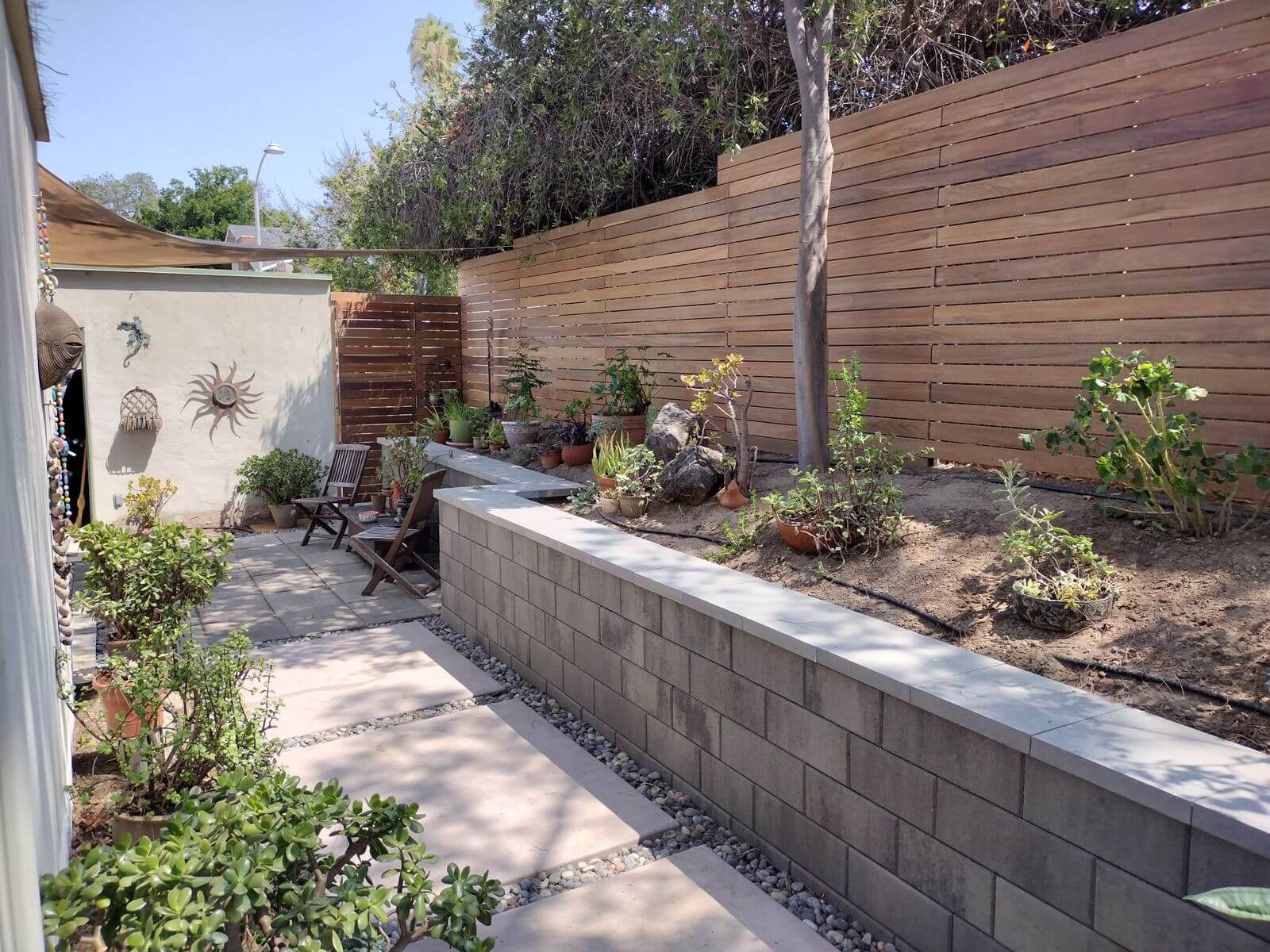
Home Aesthetics and Walkway Design
Your walkway isn’t just a functional path; it also contributes significantly to the overall aesthetics of your home. It serves as an extension of your property, welcoming guests, and making a visual impact. It’s crucial to ensure that the chosen walkway material aligns with your home’s architectural style and design.
- Complement Architectural Style — Choose a material like natural stone pavers to enhance a traditional home or sleek concrete for a modern look. Match the walkway to the existing architectural aesthetics.
- Coordinate With Existing Hardscape — Match walkway materials to other hardscapes, like patios, for a cohesive design. If you already have a brick patio, use matching brick pavers on connecting walkways.
- Consider Color/Texture — Opt for walkway materials and patterns that complement exterior paint colors. Smooth, cool grays pair well with contemporary stucco finishes, for instance.
- Balance With Landscape — Have walkway materials transition smoothly from greenery and other natural elements, such as outdoor water features. The goal is to create a visually pleasing transition from nature to man-made elements.
- Create Visually Pleasing Flow — Design the walkway to lead the eye smoothly across the landscape, connecting patios, entries, gardens, etc. in an aesthetically appealing layout.
- Enhance Curb Appeal — Use the walkway to establish a focal point, frame the entry, or draw attention to beautiful landscape features from the curb.
- Reflect Personal Style — Incorporate materials, patterns, and colors you find visually appealing to reflect your personal preferences. For instance, a whimsical mosaic walkway adds artistic flair.
- Consider Surroundings — Match the style and feel of nearby homes and landscapes. For example, rustic flagstone fits better in a wooded area than slick modern tiles.
The Different Types of Walkway Materials
There’s a wide range of choices available for walkway materials. Each material has its own distinct qualities that can enhance the overall aesthetic appeal of your home.
Some of the most popular options include:
- Brick: Brick walkways are a classic choice, known for their timeless elegance. They can be laid in various patterns, adding visual interest to your landscape. Brick is durable and requires minimal maintenance.
- Concrete Pavers: Concrete pavers offer versatility in terms of design and color options. They’re available in various shapes and sizes, allowing for creativity in creating unique patterns. Concrete pavers are also durable and require low maintenance.
- Natural Stone: Natural stone, such as flagstone or slate, provides a natural and organic look to your walkway. It adds character and can complement different architectural styles. While natural stone may require sealing and occasional maintenance, it offers excellent durability.
- Gravel: Gravel paths have a charming rustic appearance and are relatively low-cost compared to other materials. However, they require regular maintenance to prevent weed growth or displacement.
- Mulch/Grass/Turf: For a more relaxed and natural feel, you can use mulch, grass, or turf as walkway materials. These options are suitable for less frequently used areas as they may not withstand heavy foot traffic.
Natural Versus Artificial Materials
When choosing the perfect walkway material for your home, one of the key decisions you’ll need to decide whether to go with natural or artificial materials.
Natural Materials
Some of the things to keep in mind when choosing natural materials include:
- Organic, Timeless Beauty — Natural materials like brick, stone, and gravel provide an inherently organic, earthy aesthetic that is timeless and classic. Their raw, unfinished look blends seamlessly into the landscape.
- Enhances the Natural Surroundings — The colors and textures of natural materials complement gardens, trees, and other natural features surrounding a home. Their imperfections add warmth and charm.
- Suits Traditional Architecture — Brick is a classic paver choice that suits traditional home styles. Its earthy red hue and handmade appeal match classic architecture.
- Rustic, Wooded Appeal — Natural stone pathways winding through wooded yards or rustic gardens create an inviting, peaceful ambiance. The materials match the surroundings.
- Requires More Maintenance — Compared to artificial alternatives, natural materials need more periodic upkeep to maintain their beauty. This includes resealing, power washing, weed control, etc.
Artificial Materials
If you choose artificial materials, keep these things in mind:
- Modern, Sophisticated Look — Materials like concrete pavers and composite decking provide a very sleek, contemporary appearance. The uniform perfection suits modern architectural styles.
- Complements Minimalist Style Homes — Clean lines and lack of imperfections in artificial materials complement homes with a minimalist, spartan aesthetic inside and out.
- Enhances Durability — Artificial materials stand up very well to heavy foot traffic, weather fluctuations, and wear and tear over time. Their factory-manufactured nature makes them tough and resilient.
- Lower Maintenance Needs — Due to their durable design, artificial pavers, and decking require much lower maintenance over time compared to natural stone or brick. Their upkeep is minimal.
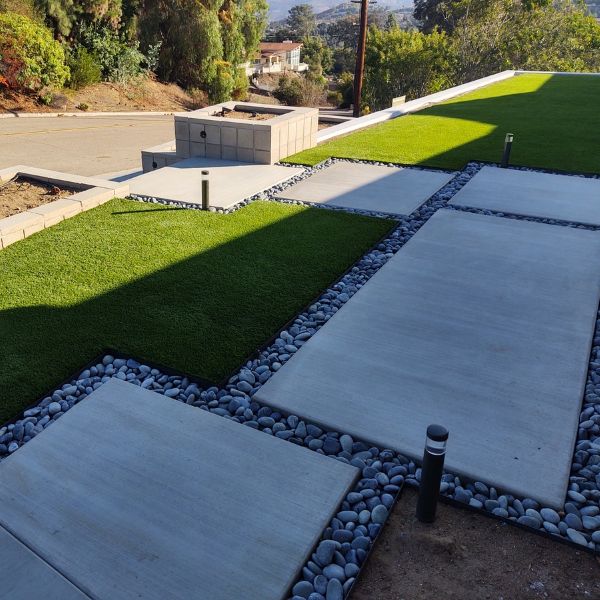
Walkway Sizes and Their Implications
The size of your walkways plays a crucial role in both their functionality and aesthetic appeal. The dimensions you choose can have practical implications, as well as impact the overall visual balance of your outdoor space.
- Width: For high-traffic areas, allow three to four feet for a comfortable two-person passage. Even wider walkways create a spacious, grand feel and accommodate wheelchairs.
- Length: Long sweeping pathways through gardens or lawns draw the eye in, creating an illusion of expanded space. Use longer walkway lengths to direct visitors to a focal point.
- Shorter Paths: Compact stepping stone paths connecting the patio to the garden provide efficient navigation between areas. Keep walkways concise in smaller yards.
- Smaller Paths: Narrow garden side paths for occasional use can be charming without monopolizing yard space. Use narrow lines to weave through planting beds.
- Purpose: Tailor walkway dimensions to suit the purpose. Wider, more open walkways welcome guests to the front door. Meandering garden paths encourage leisurely strolling.
- Traffic Flow: Design a walkway layout to facilitate smooth traffic flow between the driveway, entry, patio, lawn, gardens, and other areas.
- Proportions: Ensure walkway sizes visually balance within the overall landscape proportions. Overly wide or long walkways may overwhelm a compact yard.
- Budget: Larger walkways require more construction materials and labor. Determine budget constraints before deciding on the walkway scale.
- Future Plans: You must account for potential future additions, like a patio expansion that may involve rerouting walkways.
The Costs of Walkway Materials
When considering the perfect walkway material for your home, it’s crucial to take into account the costs associated with your new addition:
- Budget: Evaluate must-haves and nice-to-haves for your walkway when setting a budget. Be realistic about what you can afford.
- High-Cost Options: Elegant materials like brick, natural stone, and pavers elevate landscape design but carry higher price tags. They’re significant investments.
- Lower-Cost Alternatives: Inexpensive options such as gravel, mulch, and step stones in gravel provide function at a fraction of the cost. Get creative to save money.
- Trees/Litter: Constant tree debris makes maintenance a headache for materials like gravel. Factor in long-term care costs.
- Frequency of Use: The more durable the material, the higher the value when considering cost per use. Materials that endure foot traffic have longevity.
- Cohesive Design: Tying together the walkway with matching patio or home exterior materials creates a polished, planned look. Consistency has aesthetic value.
- Mimic High-End Looks: Alternatives like stamped or stained concrete replicate pricier materials for less. Faux finishes provide the look you want on a budget.
- Future Expansion: Plan a foundation and base to accommodate potential future walkway extensions or layout changes. Built-in flexibility saves down the road.
- Professional Installation: Complex materials like poured concrete often require hiring professional installers, adding to the cost. DIY-friendly materials empower homeowners.
Transform Your Outdoor Space With a Beautiful New Walkway
At Wilson Woodscape, we can help select the perfect materials, colors, and patterns to complement your exterior space with a custom walkway. We handle all aspects of installation, from laying the base to precision construction. Contact our San Diego office at (619) 838-1398 today to request an appointment!

